Gardening is a relaxing hobby and an excellent way to get in touch with nature, even if it’s only in your backyard. Annuals are plants and flowers that only have one growing season, unlike perennials, which continue to come back year after year. In both cases, knowing which zone you live in is crucial when picking out the best plants. However, since you only get one season out of annuals, planting in the correct zone is key! Many varieties of annual plants and flowers grow well in Zone 6, which has milder winters and longer blooming seasons! The five best annuals to grow in Zone 6 are ageratum, calendula, dahlia, salvia, and moss rose, based on overall hardiness. However, there’s more to plant zones than meets the eye!
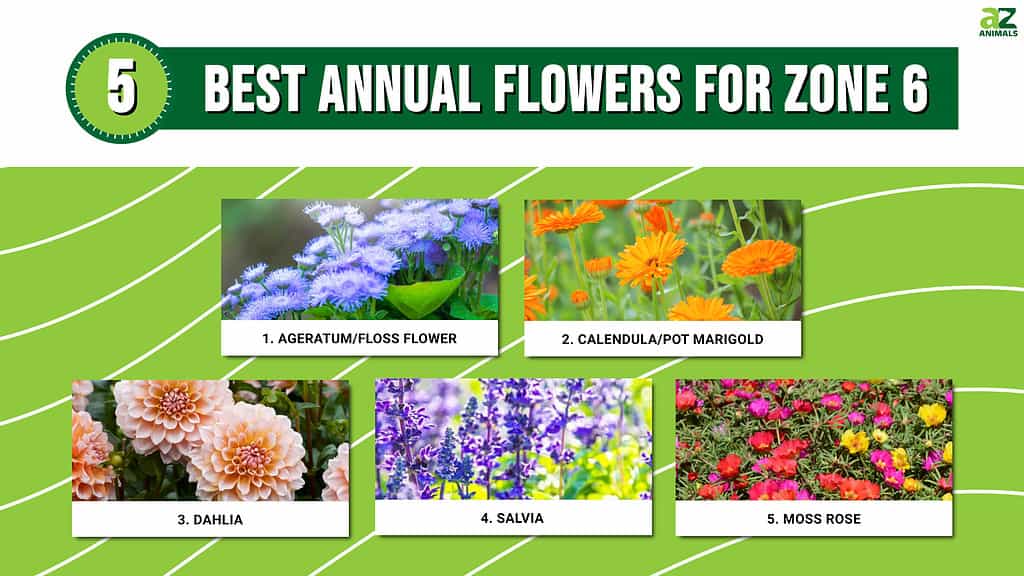
What Are Plant Zones?
The United States Department of Agriculture (USDA) developed and maintains the Plant Hardiness Map. This map is split into 13 zones to aid growers and gardeners in selecting plants that thrive well in their area. These zones are determined by the lowest average winter temperatures, much like a weather map. Each of the 13 zones is split as well. For example, in Zone 6 you will see Zone 6a or 6b to indicate whether a plant grows best in the northern or southern part of the area. Plants that grow well in both parts of a zone are considered the hardest!
What Is An Annual Plant?
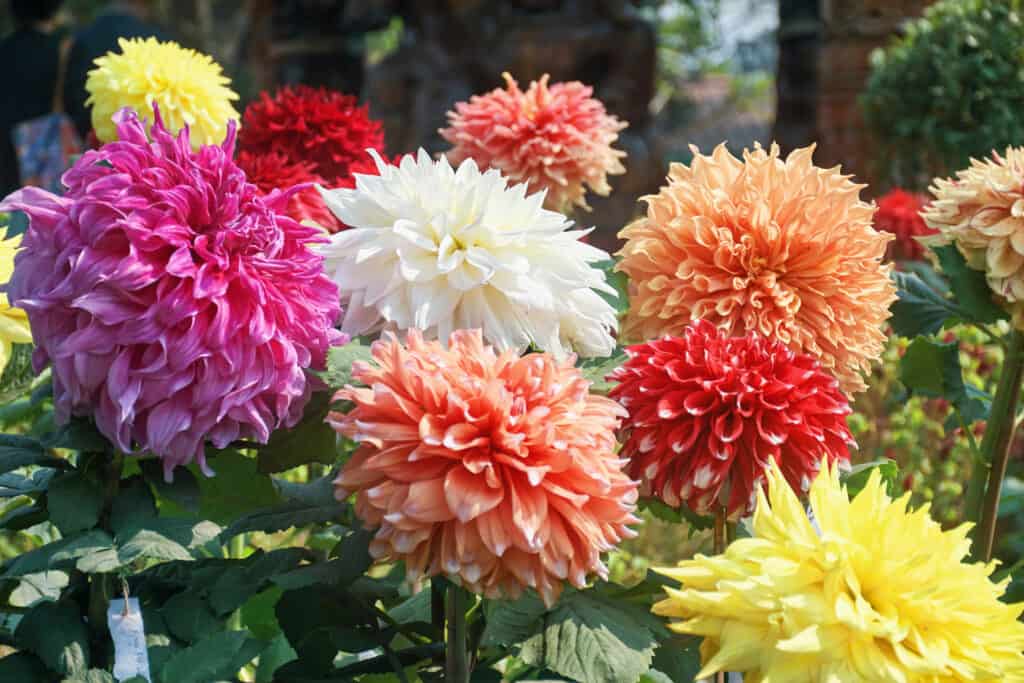
Annuals are plants and flowers that only have one growing season.
©suprabhat/Shutterstock.com
There are two types of plants or flowers commonly grown in a garden, annuals, and perennials. While the name can be misleading, an annual plant or flower only blooms for one growing season, after which the plant itself dies. Perennials are plants that continue to come back during their growing season year after year. That means that any annual plants or flowers placed in your garden will need to be replaced every year. The cool thing about annuals is that you can bring creativity and change to your garden each season!
Best Annuals to Grow in Zone 6
Zone 6 is known for its mild winters and longer growing seasons. This zone shows dark or light green on the Plant Hardiness Map and includes northwestern states such as parts of Washington and Oregon, as well as the northeastern states such as Pennsylvania and New York. It is important to note that some states may have more than one zone, depending on average winter temperatures. For our list, we went with the five annuals that thrive in both Zone 6a and Zone 6b with the longest growing seasons.
1. Ageratum/Floss Flower
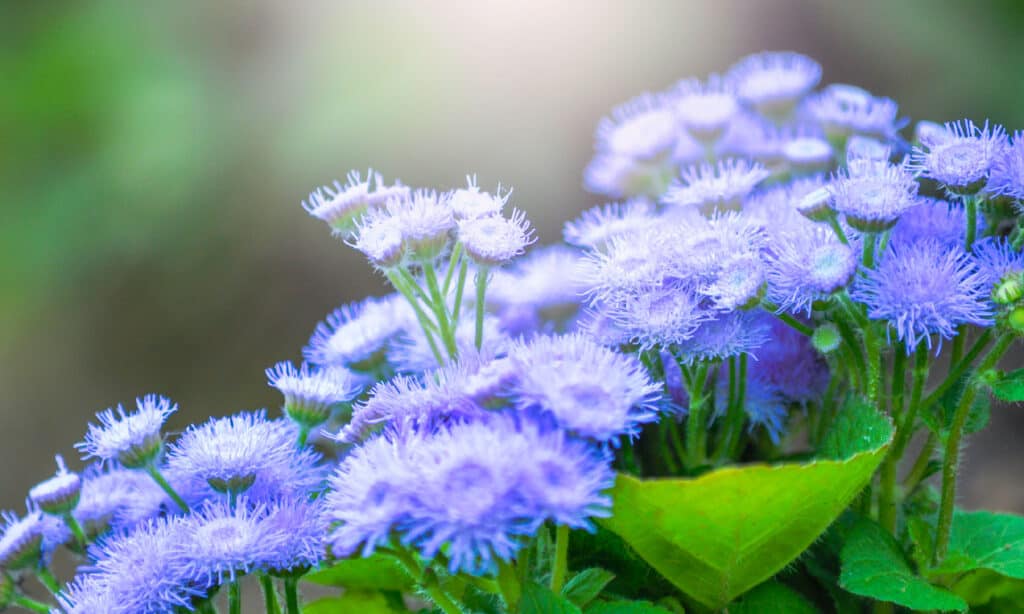
Ageratum is an excellent choice for edging or border beds.
©undefined undefined/Shutterstock.com
This flowering plant comprises 43 different species and is native to Central and South America, but is classified as late spring to fall annual in Zone 6. Ageratum, more commonly known as floss flower, is an excellent choice for edging or border beds. The plant grows to around 2 feet high and has clusters of between 5-15 florets. Depending on the species, this bloom can be white, pink, lavender, or blue. This is one of the few plants with true-blue coloring!
2. Calendula/Pot Marigold

Calendula has double and semi-double blooms in shades of orange and yellow.
©Yulia_B/Shutterstock.com
This is an exceptional annual for late-season colors to transition into the winter months. Pot marigold is planted in early fall for bloom in late fall and winter. Calendula has double and semi-double blooms in shades of orange and yellow and is between 18-20 inches tall. This is a wonderful fall plant to grow in Zone 6, and you can even start growing seeds indoors to get early blooms six weeks before the last frost!
3. Dahlia
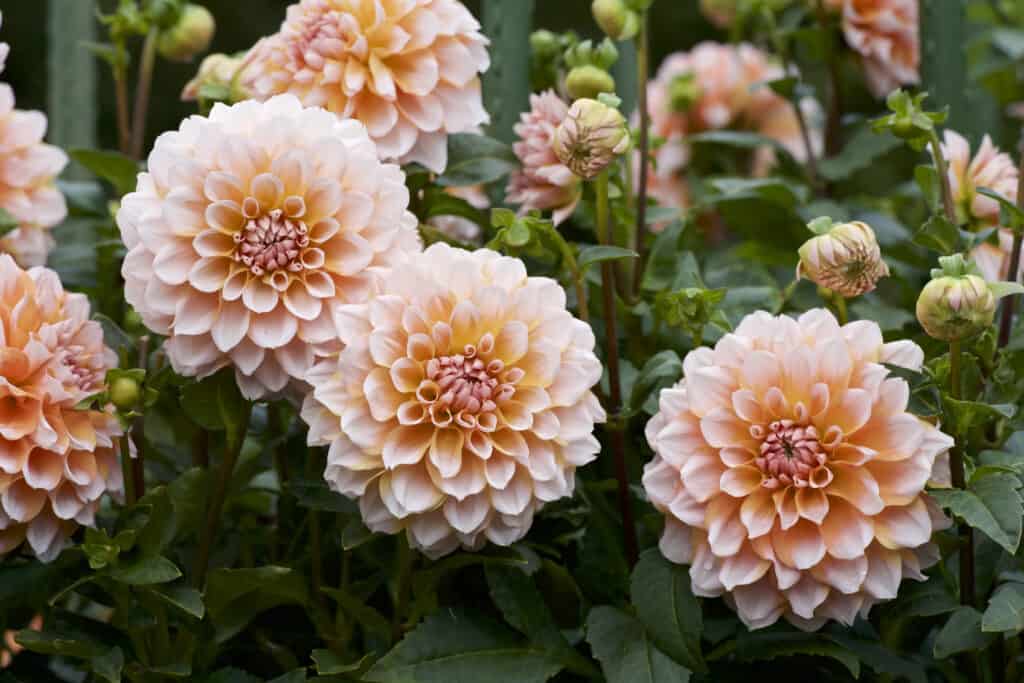
Dahlias are planted in spring when the danger of frost is passed.
©iStock.com/Billy_Fam
Technically speaking, dahlias aren’t often placed on the list as annual plants. However, in Zone 6 they can be! This is because dahlia tubers cannot overwinter in temperatures below 20 degrees Fahrenheit and will need to be lifted and stored until the next season. Many gardeners in this zone choose to treat dahlias as annuals because of their showstopping blooms and wide color variety. Dahlias are planted in spring when the danger of frost is passed, in fertile, well-drained soil. Growth should be pinched back at one foot high to encourage growth, and deadheads removed to bloom throughout the summer.
4. Salvia
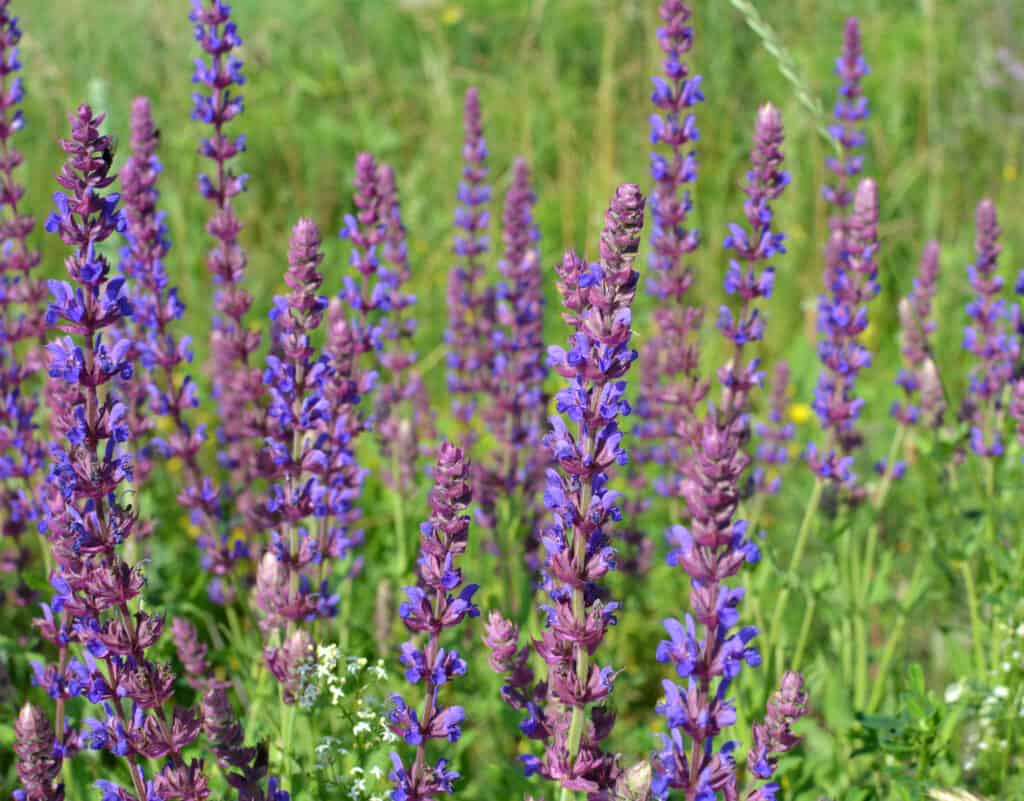
Salvia is a midsummer annual that should be planted in spring after the last frost.
©iStock.com/Orest Lyzhechka
This plant is a relative of kitchen sage and is an easy and low-maintenance plant in most gardens. It comes in a variety of colors and sizes, ranging from 18 inches to five feet high depending on the species. Like lavender, salvia blooms in densely packed spikes of small flowers. Adding salvia to your garden also aids in conservation, attracting pollinators like hummingbirds and honeybees!
In Zone 6, salvia is a midsummer annual that should be planted in spring after the last frost. Salvia is both heat and drought-tolerant, but it is important to select the right variety, as not all plants thrive in all zones. Salvia varieties can be annual or perennial, depending on the type selected.
5. Moss Rose
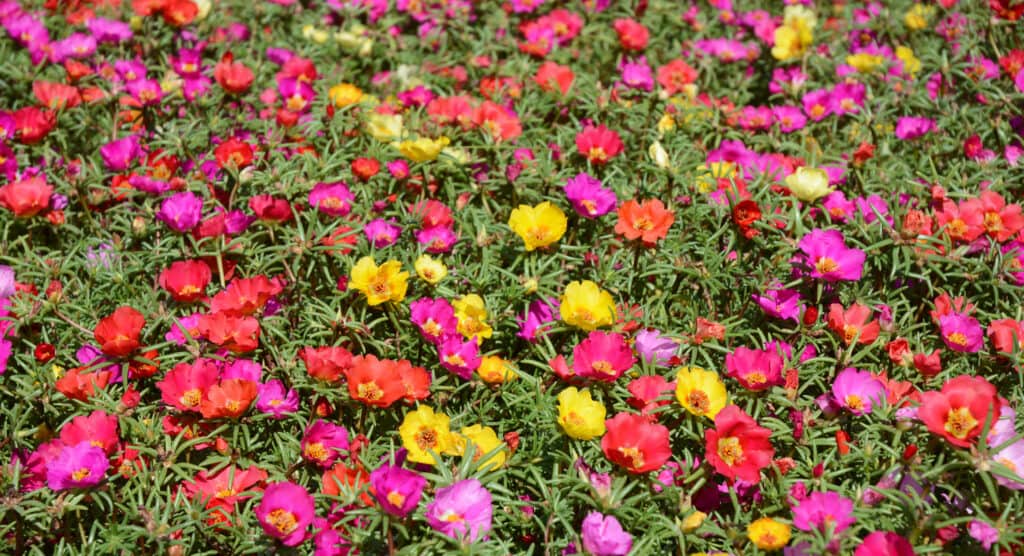
Moss rose has intriguing succulent leaves and stems.
©iStock.com/Lex20
Moss rose is a nearly perfect annual for most growing zones, and one of the most popular choices for gardeners of all skill levels. This summer, this annual produces beautiful blooms ranging from pink and red to orange and yellow without the need to deadhead. It also stands up to unexpected heat and drought due to its intriguing succulent leaves and stems. Due to its hardy and tolerant nature, it’s often one of the first annuals you can plant in the spring!
The photo featured at the top of this post is © iStock.com/Helena Bezold
Thank you for reading! Have some feedback for us? Contact the AZ Animals editorial team.






